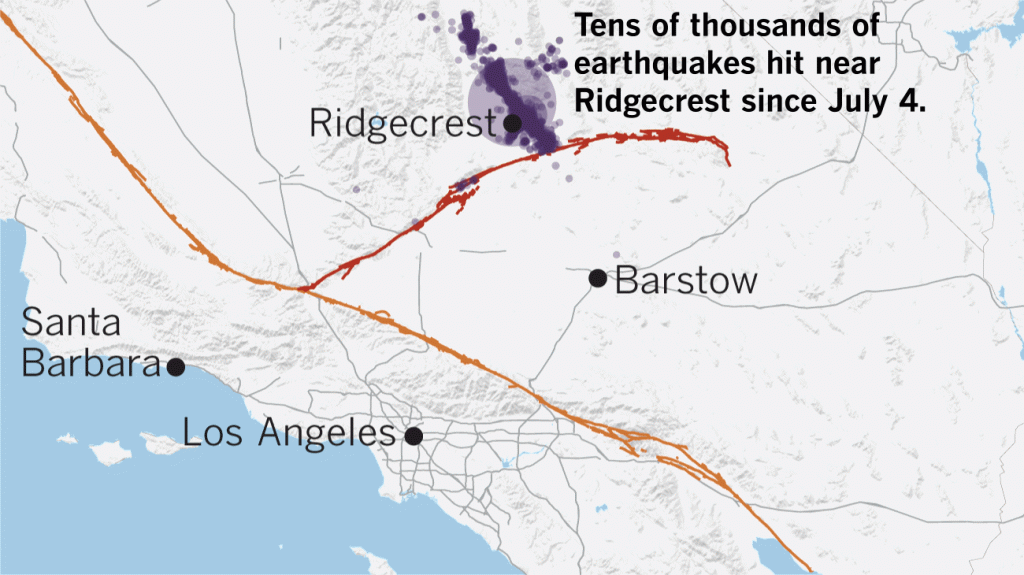A major California fault line is shifting for the first time in history, triggered by the series of earthquakes that shook Southern California in July.
This is surprising, because we’ve never seen the Garlock fault do anything. Here, all of a sudden, it changed its behavior. We just don’t know what it means.

The Garlock fault line is near the Ridgecrest area where earthquakes measuring M6.4 and M7.1 hit in July and were followed by thousands of aftershocks. The fault has slipped nearly an inch at its surface since the Ridgecrest quakes, scientists say.
The movement, as well as other findings about the Ridgecrest quakes, was detailed in a research paper published Friday in the journal Science.
Ross and his fellow researchers analyzed data gathered by orbiting radar satellites and ground-based seismometers to piece together a picture of the seismic activity involved in the Ridgecrest quakes, according to a press release from Caltech. They discovered that the Ridgecrest event was far more complex than models of many other large seismic events.
“This was a real test of our modern seismic monitoring system,” Ross said in the press release. “It ended up being one of the best-documented earthquake sequences in history and sheds light on how these types of events occur.“
The study’s release coincided with the 30th anniversary of the deadly M6.9 earthquake that destroyed buildings and collapsed a freeway in San Francisco.
The Ridgecrest quakes involved a series of complex, previously unknown interconnected faults. The study noted that the “dominoes-like sequence” of ruptures surrounding the event put strain on the Garlock fault.
“We actually see that the magnitude-6.4 quake simultaneously broke faults at right angles to each other, which is surprising because standard models of rock friction view this as unlikely,” Ross said. “It is remarkable that we now can resolve this level of detail.“
He pointed out that the event proved just how little is understood about earthquakes.
“Over the last century, the largest earthquakes in California have probably looked more like Ridgecrest than the 1906 San Francisco earthquake, which was along a single fault,” Ross said.
“It becomes an almost intractable problem to construct every possible scenario of these faults failing together — especially when you consider that the faults that ruptured during the Ridgecrest Sequence were unmapped in the first place.”
“We can’t just assume that the largest faults dominate the seismic hazard if many smaller faults can link up to create these major quakes.”
Well I just hope this is not a sign of the Big One. Just be prepared if you live in the area. [Science, LATimes, CalTech, USGS, Weather]













Could an array of raptor engines tethered to the moon surface and facing out. Turn them on.